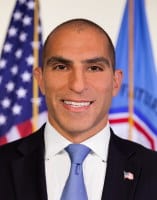

Nasdaq has developed a new technology that securely digitizes the issuance, settlement, and custody of carbon credits that can replace manual processes and makes it easier for users to connect to registries in order to help scale this new market, which is expected to grow in the coming years.
Gerard Smith, vice president, business development of digital assets for Nasdaq’s Marketplace Technology business told Markets Media: “Most voluntary carbon market registries use old, clunky technology which makes it difficult for customers to interface with – there’s a lot of screen scraping and manual processes.”
He continued that Nasdaq’s solution digitizes assets and provides a comprehensive set of APIs, which is important for users to access registry platforms in the same way that they would access any other financial market infrastructure.
Nasdaq has been working on the technology for about 18 months and started development about a year ago.
The digital platform is completely new with the application layer built with smart contracts using DAML, the smart contract language developed by Digital Asset, the provider of blockchain for enterprises. The distribution layer consists of a single or multiple nodes, and customers can choose either an underlying database or an enterprise blockchain based on their particular use case and cost.
“There are obstacles to scaling voluntary carbon markets which we can help solve by giving registries APIs, allowing them to aggregate their data and provide seamless settlement instructions,” said Smith.
He added that carbon market volumes are expected to significantly increase over the next few years and without bringing new technology to bear it is going to be difficult to scale.
“In order to solve some of the structural issues such as price transparency, you need accurate, active secondary markets,” added Smith. “We are big proponents of standards as a way of being able to scale these markets.”
Nasdaq worked closely with the Global Blockchain Business Council on the carbon taxonomy framework, who have done a significant amount of work on defining a carbon taxonomy, which is incorporated into the new platform.
Growth
Nasdaq has been active in the carbon space for a while, and more broadly across ESG solutions according to Smith. For example, its ESG solutions allow corporates to measure their carbon footprint and provide sustainability reporting for boards.
In 2021 Nasdaq acquired a majority stake in Puro.earth, which it said is the world’s leading platform for engineered carbon removal. Puro.earth is scaling the carbon dioxide removal industry by connecting buyers with suppliers physically capturing CO2 from the atmosphere and stabilizing it in a durable storage.
Nasdaq replaced Puro.earth’s core registry platform and Smith said there are several other opportunities in the pipeline to provide Nasdaq technology more broadly across the carbon market.
Antti Vihavainen, chief executive of Puro.earth, said in a statement: “Accurately managing the lifecycle of carbon credits is essential for trust. By leveraging Nasdaq’s technology, the core part of our carbon crediting infrastructure, the Puro Registry will be modernized.”
The first use case for the new technology is carbon credits but it could be used in other asset classes. The core of the platform is issuance, settlement and custody and Nasdaq has service packs that are asset class specific.
Instead of manually entering the details of a bond issuance, the data will be issued into a token that can exist either on a database or an enterprise blockchain, and either on a single node or on distributed nodes. This lays the foundation for CSDs to tokenize assets they currently service and gives them the opportunity to start thinking about servicing new asset classes, such as real estate.
“We have a full service pack for voluntary carbon markets, and will continue to build that out by adding more functionality,” said Smith. “Bonds will become another service pack and we are currently integrating the platform into our central securities depository technology, which we’re already doing with Chile’s CSD.”
Improving integrity of carbon markets
Voluntary carbon markets have been criticised for their lack of integrity and lack of transparency. Smith argued that technology can play a powerful role improving overall integrity as smart contracts can bring greater transparency from the point of issuance to the settlement and custody of these assets.
Nasdaq’s technology focuses on carbon credit from the point of issuance, so does not involve verifying the credits that are issued.
Smith said: “To address integrity issues further down the food chain the industry is responding with tools to verify the issuance process – for example, using the internet of things and satellite technology to verify whether a forest is actually planted and still there in five years’ time.”
For example, in December the World Bank announced plans for the growth of high-integrity global carbon markets, with 15 countries set to earn income from the sale of carbon credits generated from preserving their forests, which could be up to $2.5 bn in the right market conditions.
Each carbon credit will be monitored, reported, and verified by a third party against the World Bank-managed FCPF Standard and World Bank Environmental and Social Standards.
The World Bank will work with the private and public sector to implement integrity principles for buyers and sellers of credits and introduce common frameworks for organizations validating and verifying credits, such as independent credit rating agencies.
In December the Commodity Futures Trading Commission also approved a proposed guidance and request for public comment regarding the listing for trading of voluntary carbon credit derivative contracts.
Rostin Behnam, CFTC chairman, said in a statement: “The Voluntary Carbon Market Proposed Guidance is a clear statement that the CFTC will do its part to elevate the standard setting efforts already underway,” said. “Our goal all along has been to help shape standards in support of integrity, which will lead to transparency, liquidity, and ultimately price discovery – all established hallmarks of CFTC regulated markets.”
The Board of the International Organization of Securities Commissions (IOSCO) is also consulting on a set of good practices to promote the integrity and orderly functioning of the voluntary carbon markets.







